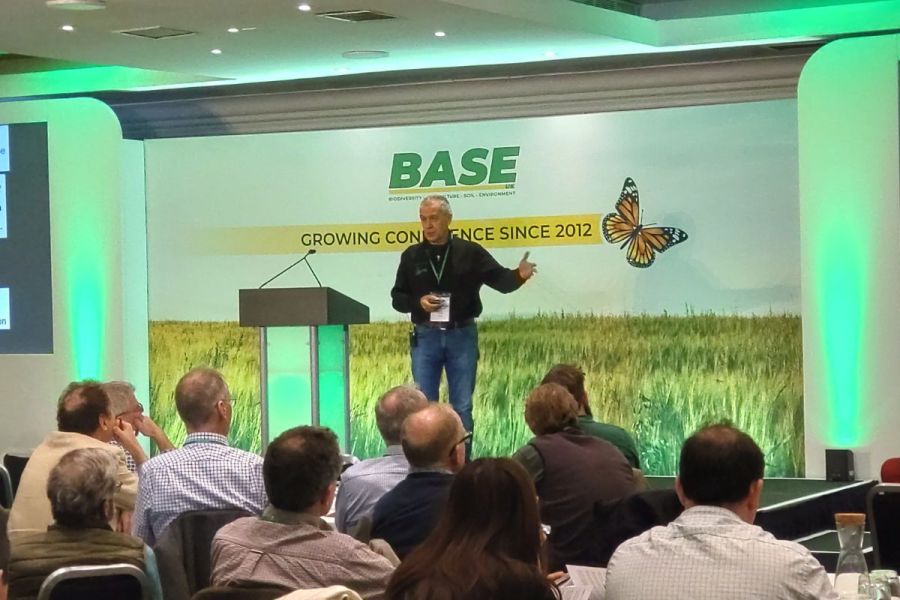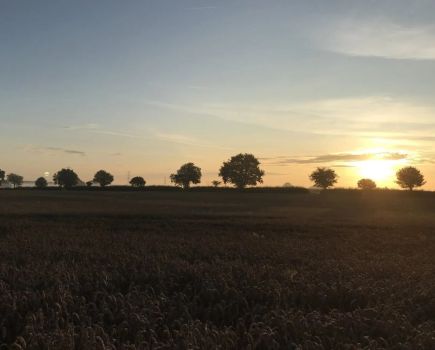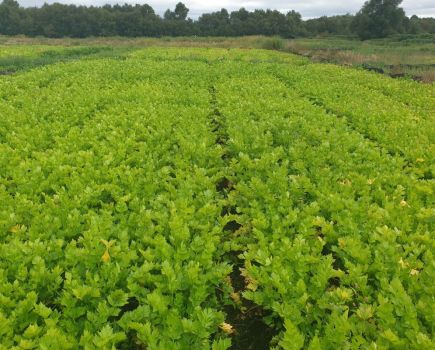Cover crops and other aspects of regenerative agriculture were discussed at the recent BASE-UK conference. CPM picks out some highlights for part two of coverage of this event.
“Cover crops could form the basis of enterprise stacking.”
By Mike Abram
The impact of cover crops on farming systems not just in the UK, but globally, was the overarching theme of many of the speakers at the recent BASE-UK conference.
Event speaker, veteran US soil health specialist Jay Fuhrer, suggested that practicing no-till alone wasn’t enough to improve soil health. “No-till will help to minimise carbon loss from soils, but with cover crops we maximise carbon inputs into soils. Putting the two together is when the magic starts to happen,” he said.
Maintaining green cover helps to prevent soil and wind erosion, stabilises soils, as well as reducing nutrient loss, while exudates released from plants are critical in helping to create structure in soils, he added.
And then there’s the role cover crops play in increasing diversity in cropping systems. “In our neck of the woods, we started with native grasslands with more than 100 species. When you have 100 species you have 100 different exudates,” said Jay.
“One day we took them out and replaced them with a single annual species and therefore a single exudate, sometimes just for a few months during the entire year. In the prairie, exudates going into the soil were constant and if you grazed it, even more so.
“That’s why most of our systems today aren’t capable of building soils, and why we require cover crops as something additional.”
He said that soil analysis on each of the 10 fields at Burleigh County Soil Conservation District’s Menoken Farm in North Dakota is helping to demonstrate the difference cover crops can make in cropping systems.
Baseline soil samples on the 60ha conservation demonstration farm were taken in 2009, with a follow up undertaken in 2020, explained Jay. “We do something different on each of the fields.
“For example, some include lots of low carbon crops such as canola, pea and soybean in the rotation which don’t provide much carbon and therefore food for the soil, while other fields have more high carbon crops such as cereals. All use no-till establishment techniques.”
The difference in the crop’s carbon to nitrogen ratio determines how quickly the residues will decompose. “A typical soil is 10:1 because every 1% of soil organic matter has 10,000 units of carbon and 1000 units of organic nitrogen.
“Everything decomposes to that ratio. So if you’re a soybean starting at 30:1 it’s a short trip and will decompose quite quickly. If you’re a wheat crop at 80:1 it’ll take longer,” he explained.
Jay used three fields to explain how crop management changed soil organic matter over time. He said a corn-soybean rotation showed little movement in soil organic matter because of a balance between a high and low carbon crop and a consistent amount of food coming into the soil.
Where the balance tipped towards more low carbon crops with little diversity and no grazing, soil organic matter levels had dropped over the period.
In contrast, the field which showed the largest increase in soil organic matter, going from under 3.5% to over 5%, grew the most diversity, including cover crops and had the most animal grazing days, said Jay.
He explained that mirrored on-farm experience. “A Kansas farmer said to me the only thing he’d done to really change his soils and increase yields was bringing in multi-species cover crops and grazing cattle on them, which he rotates through his crop system.
“He brought in crop diversity and then brought in livestock. When you bring in livestock you make food available to the soil food web on day one because it’s been processed through the animal. Otherwise, the plant has to decompose to make food available for the soil food web. It’s a good deal.”
But, soil laboratory tests aren’t necessary to understand the state of soils; monitoring progress of management changes can be made using simple 1mm and 2mm sieves, explained Jay.
“Crumble a little soil into the sieves with the 2mm one on top of the 1mm, shake a bit and set aside the top one. In the other sieve you have well-sorted aggregates that are a little more than 1mm and a little less than 2mm.
“Put them into a tray of water and give them 10 minutes. What you’re looking for are water stable aggregates, where there are enough glues to hold the soil particles together so the water can’t separate them. It doesn’t cost anything, and you can see whether your making progress,” he concluded.
Nuffield Scholar and Cambridgeshire farmer Toby Simpson highlighted that cover crops should be treated like a cash crop and having clear objectives is key.
“A lot of farmers I visited [during Nuffield Scholarship travels] were home-saving seed where they could, not only as a cost-benefit, but because that seed was going to be used in their soils. That’s instantly an advantage.”
It also allows growers to develop bespoke mixtures using a combination of home-saved seed and bought in species, he added.
Although, there’s no right or wrong way to establish a cover crop, said Toby. “There are so many challenges we face – labour availability, lack of moisture, residual effects of herbicides, previous crop residues inhibiting germination – but our role as farmers is to work out how to get around them.”
He believes planting density is another factor to consider – lower densities can be useful when looking to let grassweeds grow, while in organic systems weed suppression might be the goal, he said.
“I met a French professor / farmer who cultivates high density cover crops with the aim of ‘growing’ his own nitrogen. He planted 250-300 plants/m2 which provided a lot of biomass – up to 8t/ha of dry matter in which there might be 300kg/ha of nitrogen, of which maybe 100kg was available to the following crop.
“It came with a price – it’s a very expensive seed mix. But, it was the theme of my travels – once farmers had started to understand the benefits of cover crops, they were willing to spend a lot more on those mixes.”
How and when to terminate cover crops can also be a challenging decision, said Toby. “So many issues are created or solved at that point, but it often comes back to what we’re trying to achieve.
“Are we going to cause problems by terminating too late, especially on heavier soils in the UK, causing allelopathic effects on following crops, or creating nutrient lock up with high carbon residues?”
But farming ‘layered not naked’ could help to build resilience into farm businesses, suggested Toby. “Cover crops could form the basis of enterprise stacking, creating opportunities for new entrants without access to their own land, direct marketing enterprises, or additional public or private payments, for example.
“But I honestly believe once we understand the benefits of cover crops, we’ll all be doing this anyway,” he said.
Whereas for Oxfordshire farmer Ben Adams, pea-based intercrops came out on top in a farm trial of nine different combinations, while bean-based options disappointed.
The top performing plots in the trial all contained peas, with the combination of peas and mustard achieving the highest gross margin at £1036/ha, reported Ben. Yields of 2.15t/ha of peas and 0.28t/ha of mustard were harvested.
“I was amazed at how easy it was to grow mustard,” he said. “The peas used it to scaffold and the mustard just flowered and flowered. The amount of beneficials in these plots was unbelievable.”
A three-way plot of spring barley, peas and mustard was also good, providing better weed control than the two-way mix, but at the expense of some mustard yield, which as the higher value crop reduced the gross margin to £1008/ha. According to Ben’s figures, the addition of barley increased variable costs, and didn’t grow particularly well in the no-till, no input system.
Peas and oilseed rape gave the third-best gross margin at £942/ha, primarily due to a higher yield of peas (3.35t/ha). Oilseed rape in the trials didn’t grow well, achieving only 0.1t/ha in the best plot with peas.
Ben said that bean combinations disappointed, with yields of only 1.39-1.89t/ha, and even with oats, which was an easy option to grow, the gross margin was a disappointing £398/ha. However, growing vetch with oats increased margins to £618/ha.
“The results of the trial mirrored to a large extent what happened in monoculture crops, with spring beans having a poor year after not dealing well with spring drought, while spring peas and spring oats both had the best year on the farm for some time,” he commented.
None of the gross margin calculations included the potential Sustainable Farming Incentive (SFI) payments, which, when stacked could be worth up to £308/ha. Options that would fit with a spring-sown intercrop include payments for companion cropping, using no insecticides, growing overwintered cover crops, doing soil management plans and, in the future, a no-till establishment payment, suggested Ben.
Insetting – opportunity or threat?
The potential opportunity for farmers to benefit from selling nature-based solutions delivering ecosystem functions, such as water quality management, flood risk management, carbon and biodiversity outcomes, was highlighted during a presentation about Landscape Enterprise Networks (LENs) by Openfield Agriculture’s Richard Jenner. However, not all BASE-UK members saw it as an opportunity.
The idea behind LENs is to bring together all stakeholders in the supply chain to identify shared land management requirements that would be difficult to tackle within an individual supply chain, such as mitigating flood risk, protecting nature and increasing biodiversity, improving the resilience of crop production or meeting greenhouse house emission targets.
“Clearly net zero targets are a key driver, that’s not just in agriculture, but in every industry. It means there are natural capital opportunities available to farmers should you wish to access them, LENs is just one option,” said Richard.
In LENs, the assembled stakeholders collaboratively fund growers to act on their farms to help achieve identified outcomes. For example, in East Anglia from 2020, farmers have been paid for using reduced cultivation systems, putting in year-long fallows with cover crops, growing overwinter cover crops and planting new native broadleaf woodlands.
In 2023 £3.9M was paid by four organisations – Nestlé Purina Petcare, Cereal Partners UK, West Northamptonshire Council and Anglian Water – to more than 100 farms across the region for 16,324ha worth of measures aimed at reducing carbon emissions, mitigating against floods, improving soils, creating biodiversity habitats, improving water quality and adding resilience in supply chains.
While funding has increased year-on-year, the scheme has become so successful that there are more applications than funds, said Richard. That means specific measures are prioritised, with a prioritisation list shared with applicants.
The other key aspect is there’s no set price for a specific measure such as growing a cover crop. LENs uses a platform called Nature Bid, where growers pick the fields where they’ll implement a measure and input a price for what they believe it’ll cost.
“Some farmers don’t like that, preferring to be told how much they’ll receive, but at least you have some agency for what you’re getting, although there are no funding guarantees,” commented Richard.
Once the funding and a contract have been agreed, the onus is on the farmer to put the measure in place. “But it’s flexible enough, if you can’t implement the measure, you haven’t received the money and there’s no comeback.”
Verification was light touch so far – a photo of a seed bill for a cover crop, and before and after pictures, for example – while Soil Association Exchange and Trinity AgTech were involved in a project to measure whether they were having the desired outcomes, he added.
“Clearly the companies want to know it’s working – that’s what they’re paying for. But there’s also feedback to farmers so you can see what’s happening as a result of what you’re implementing.”
It involves a certain amount of data sharing, he admitted. “If you don’t want to share data, the LENs model isn’t going to be for you.”
Delivering natural capital assets and services within the supply chain in this type of scheme risked it becoming a condition of supply, Staffordshire farmer Clive Bailye suggested during questions from the floor.
“This is an asset and service that only farmers can supply,” he said. “Why would I restrict my market to just the food chain? Ultimately, a bit like we’ve seen with farm assurance, it could become the default condition of supply, and all the money and wonderful bribes these companies like to give at the moment will disappear.
“We know this isn’t altruistic; it’s about satisfying their scope three emissions. So why would farmers want to inset? Why not keep the market open and if Tesco, Nestlé, etc., want to buy these assets they can bid against British Airways, Shell or whoever wants to bid to set a genuine market price.”
Richard agreed this was a genuine risk. “I don’t have an answer to how we resist that collectively, but there is a real danger that is how it evolves and it is important we have a framework so that doesn’t happen.”
This article was taken from the latest issue of CPM. For more articles like this, subscribe here.
Sign up for Crop Production Magazine’s FREE e-newsletter here.




